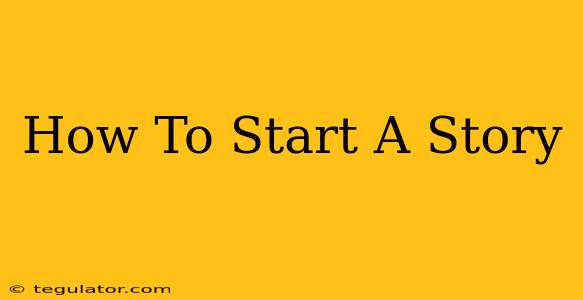Starting a story is arguably the hardest part of the writing process. A captivating opening grabs your reader's attention and compels them to continue reading. A weak start, however, can lead to a story abandoned before it even has a chance to shine. So, how do you craft a truly compelling beginning? Let's explore some effective techniques.
Mastering the Art of the Opening Hook
Your opening needs to do more than just introduce your characters and setting; it needs to hook your reader. This means creating an immediate sense of intrigue, urgency, or curiosity. Consider these powerful strategies:
1. Start with a Bang: The Action Hook
Begin in medias res – in the middle of the action. Throw your reader straight into a thrilling scene, a moment of high tension, or a surprising event. This immediate engagement prevents them from putting the book down.
Example: "The explosion rocked the city, shattering windows and sending a plume of black smoke billowing into the already bruised sky."
2. Intrigue with Mystery: The Question Hook
Pose a compelling question that immediately piques the reader's curiosity. This leaves them wanting answers, driving them to read further to uncover the truth.
Example: "Where did the missing amulet go, and more importantly, who took it?"
3. Paint a Vivid Picture: The Descriptive Hook
Use evocative language to create a rich sensory experience for your reader. This immersive approach draws them into the world you've created and makes them feel like they are part of the story.
Example: "The salty air whipped through her hair as she stood on the cliff's edge, the relentless waves crashing against the rocks below, mirroring the turmoil in her heart."
4. Introduce a Unique Character: The Character Hook
Start with a memorable character, highlighting their unique traits or quirks. This immediately establishes a connection with the reader and creates anticipation for their journey.
Example: "Elara, a woman whose laughter echoed like wind chimes and whose eyes held the wisdom of ancient forests, knew this was her last chance."
5. Set the Tone with Dialogue: The Dialogue Hook
Begin with a piece of impactful dialogue that sets the scene and hints at the underlying conflict. This immediate engagement creates a sense of mystery and draws the reader in.
Example: "I swear, I didn't see him," she whispered, her voice trembling slightly. "He just… disappeared."
Beyond the Hook: Essential Elements of a Strong Opening
While the hook is crucial, it's just the beginning. A strong opening also needs to:
- Establish Setting: Briefly introduce the time and place of your story.
- Introduce Protagonist(s): Give the reader a glimpse into your main character(s).
- Hint at the Conflict: Subtly introduce the central problem or challenge.
- Create a Sense of Voice: Let your unique writing style shine through.
Practice Makes Perfect
Experiment with different opening techniques to find what works best for you and your story. The key is to write, rewrite, and revise until you've crafted an opening that is both engaging and effective. Don't be afraid to get feedback from others to refine your approach. Starting strong is the best way to ensure your story gets the attention it deserves.

